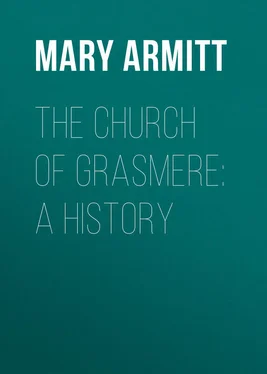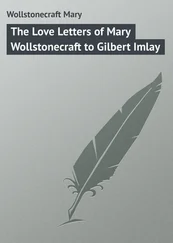Mary Armitt - The Church of Grasmere - A History
Здесь есть возможность читать онлайн «Mary Armitt - The Church of Grasmere - A History» — ознакомительный отрывок электронной книги совершенно бесплатно, а после прочтения отрывка купить полную версию. В некоторых случаях можно слушать аудио, скачать через торрент в формате fb2 и присутствует краткое содержание. ISBN: , Жанр: foreign_antique, foreign_prose, на английском языке. Описание произведения, (предисловие) а так же отзывы посетителей доступны на портале библиотеки ЛибКат.
- Название:The Church of Grasmere: A History
- Автор:
- Жанр:
- Год:неизвестен
- ISBN:http://www.gutenberg.org/ebooks/43002
- Рейтинг книги:4 / 5. Голосов: 1
-
Избранное:Добавить в избранное
- Отзывы:
-
Ваша оценка:
- 80
- 1
- 2
- 3
- 4
- 5
The Church of Grasmere: A History: краткое содержание, описание и аннотация
Предлагаем к чтению аннотацию, описание, краткое содержание или предисловие (зависит от того, что написал сам автор книги «The Church of Grasmere: A History»). Если вы не нашли необходимую информацию о книге — напишите в комментариях, мы постараемся отыскать её.
The Church of Grasmere: A History — читать онлайн ознакомительный отрывок
Ниже представлен текст книги, разбитый по страницам. Система сохранения места последней прочитанной страницы, позволяет с удобством читать онлайн бесплатно книгу «The Church of Grasmere: A History», без необходимости каждый раз заново искать на чём Вы остановились. Поставьте закладку, и сможете в любой момент перейти на страницу, на которой закончили чтение.
Интервал:
Закладка:
It should be noted that the old name for them was simply "The Eighteen." They are called Questmen in a contract of 1687, but this appears to have been drawn up by a stranger. The term Sidesmen occurs late, and so does "The Twenty-four" which reckons the six wardens, two for each township, in the number. Strictly, the wardens (of whom there were eight in Cartmel) should not be included.
PART III
RECORDS
PATRONS
MONASTIC CONTROL
THE CLERGY
THE CIVIL WARS
THE COMMONWEALTH
RECORDS
The church constitution of Grasmere was therefore from early times that of a parish controlled and administered by a body of men representing the people, who were responsible for the funds that maintained the building and its services, while the clergy who officiated were supported by the ancient system of the payment of tithes.
The offering of pious folk of the tenth of their yearly yield was at first intended to cover all expenses, but it soon became diverted into purely ecclesiastical channels. The tithe-paying parish indeed early excited the cupidity of the least scrupulous members of Church and State. Already in 1254 a rector of Grasmere is found to be drawing the revenues of the parish without troubling to serve it except by deputy; for the Pope in that year granted a dispensation to Henry de Galdington, rector of "Grossemer" in the diocese of York, to hold an additional benefice with cure of souls. 57 57 Calendar of Papal Registers , vol. ii., p. 294.
This is the first record of the church discovered so far.
The value of the rectory is stated in the dispensation to be ten marks (£6 13s. 4d.). Estimates, however, varied widely. About 1291 a taxation was made out for all ecclesiastical benefices in England, the cause being Pope Nicholas I.'s promise of the tenths which he claimed from them, to Edward I. for a term of six years, towards the expenses of a crusade. This great valuation remained the standard of taxation until the time of Henry VIII. It is said to have been completed for the Province of York in 1292; and it sets down the "church of Gressemere" in the Archdeaconry of Richmondshire as being worth £16, and that of Wynandermere as £10. 58 58 Tax. Eccle. P. Nicholai , iv.
But the high valuation of 1292 did not hold good. Complaints from the northern clergy that through impoverishment by various causes, but chiefly the invasions of the Scots, they were by no means able to pay so high a tax, produced some amelioration. A correction was made in 1318, when Windermere was written down at £2 13s. 4d., and Grasmere at £3 6s. 8d., or five marks. And at this figure it remained.
It stood indeed at five marks in 1283, when the first mention of the church occurs in connection with the secular lordship.
The writing down of the value of the tithes of Grasmere was the subject of correspondence between the author and myself, and she writes: "The so called taxation of Pope Nicholas IV. was acknowledged to be too high for the Northern Counties; but the reduction of Grasmere, when the alteration was made in 1318, from £16 to five marks (£3 6s. 8d.) is unaccountable to me." It had stood at this figure previously but had been raised to £16, and, as will be seen in the text, as early as 1301 in the reign of Edward I., when the abbot of St. Mary's, York, was allowed to appropriate "the chapels of Gresmer and Wynandermere," Gresmer is described as being worth £20. In 1344, at the Archbishop's Visitation, it is described as worth 5 marks; only to be again raised in 1435. In that year upon the death of John, duke of Bedford and earl of Kendal, to whom they had been granted by his father, Henry IV., we find among the items of his property "the advowsons of Wynandermere and Gressemere each of which is worth £20 yearly." After this the tithes again reverted to 5 marks and in the reign of Henry VIII. the "pension" paid to the abbey is put down as only half of that sum, viz. £1 13s. 4d. at which it still remains.
The terms "pension" and "advowson" may not always mean the same thing, thus advowson seems to be used sometimes as synonymous with tithe. Hence Miss Armitt writes "The parish churches, such as Kendal, Grasmere, etc., were "taxed" from the twelfth century onward at a certain figure – ten marks (£6 13s. 4d.) £16 or £30. What did this taxation represent? The absolute sum to be paid by the rector from the tithes to king, pope, archdeacon, court, or feudal lord? or was it a valuation only of the tithes, from which was calculated the amounts of the various 'scots' or annual payments to ecclesiastical or temporal authorities?" It seems not unlikely that the rise from £3 6s. 8d. to £20 in the reign of Edward I. may be accounted for by the fact that the "Old Valor" which was granted by authority of Innocent the fourth to Henry III. in 1253 was superseded in 1291 by the "New Valor" granted to Edward I. by Nicholas IV., so that when Henry IV. granted the chapels of Grasmere and Windermere to his son John they were valued in 1435 at £20 each. They were only being put back to the sum named in the "New Valor" of 1291 which had been allowed in 1344 to drop to the 5 marks at which they had stood in the "Old Valor." The tithe taxation as established by the "New Valor" remained in force until Henry VIII. But a "Nova Taxatio" which only affected part of the province of York was commanded in 11 Edward II. (1317) on account of the invasion of the Scots and other troubles. These various taxings will account for the variation in payments which were collected for the benefit of the king.
W.F.R.THE PATRONS
William Rufus, upon his conquest of Carlisle, gave over to Ivo de Tailbois all these parts as a fief. After Ivo a confusion of tenure and administration prevails, into which it is useless to enter. The line of patrons of Grasmere may perhaps be begun safely with Gilbert fitz Reinfred, who married Helwise, daughter and heiress of William de Lancaster II., because it was he who first held the Barony of Kendal in chief from Richard I., by charter dated 1190. 59 59 Lancashire Pipe Rolls , Mr. W. Farrer.
His son William, called de Lancaster III., died in 1246 without a direct heir; and the children of his sisters, Helwise and Alice, shared the fief between them. It is Alice's line that we have to follow. She married William de Lindesey, and her son Walter took that portion of the barony which was later known as the Richmond Fee, and which included the advowson of our church.
Sir William de Lindesey, his son, was the next inheritor. After his death, in 1283, a jury of true and tried men declared that he had died possessed of "A certain chapel there (Gresmer) taxed yearly at 66s 8d." 60 60 Lancashire Inquests , etc. , ed. by Mr. Farrer.
The chapel of Windermere, set down at a like sum, belonged to the same lordship.
Christiana, William's heiress, was then only 16. She was married to a Frenchman, Ingelram de Gynes, lord of Coucy. There is evidence that they spent a considerable part of their time in these parts, their seat being at Mourholm, near Carnforth. Ingelram indeed fought in the Scottish wars, as did his son William. Christiana survived her husband some ten years. They had at least four sons, William, Ingelram, Baldwin, and Robert. It was William who inherited the chief part of Christiana's property in the barony of Kendal, which was declared (1334) to include the manor of Wynandermere, and the advowsons of the chapels of Wynandermere, Marieholm, and Gressemere. 61 61 Calendar Patent Rolls , 8 Edw. III. and 14 Edw. III., pt. 3, mem. 11.
The new tenant at once incurred King Edward III.'s displeasure. His interests lay apparently in France, where he resided, being styled lord of Coucy 62 62 Calendar Patent Rolls , 8 Edw. III. There was a question of a marriage between his daughter Mary and the king's brother.
; and without waiting to do homage for his mother's English lands and receiving them formally from the king's hands (as was the feudal custom), he passed them over to his young son William. The king pardoned the offence, and ratified the grant, 63 63 Calendar Patent Rolls , 8 Edw. III.
but he kept the youth, still a minor in 1339, about his person, 64 64 Calendar Patent Rolls , 13 Edw. III.
and William's short life seems to have been spent in service under the English banner. 65 65 Calendar Patent Rolls.
Интервал:
Закладка:
Похожие книги на «The Church of Grasmere: A History»
Представляем Вашему вниманию похожие книги на «The Church of Grasmere: A History» списком для выбора. Мы отобрали схожую по названию и смыслу литературу в надежде предоставить читателям больше вариантов отыскать новые, интересные, ещё непрочитанные произведения.
Обсуждение, отзывы о книге «The Church of Grasmere: A History» и просто собственные мнения читателей. Оставьте ваши комментарии, напишите, что Вы думаете о произведении, его смысле или главных героях. Укажите что конкретно понравилось, а что нет, и почему Вы так считаете.












